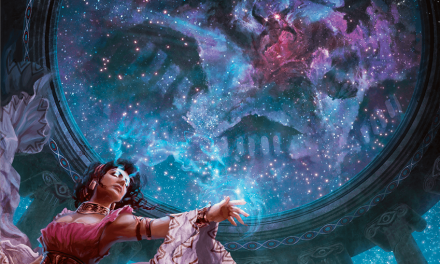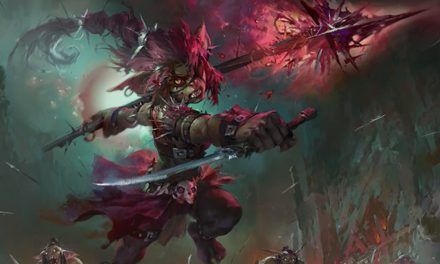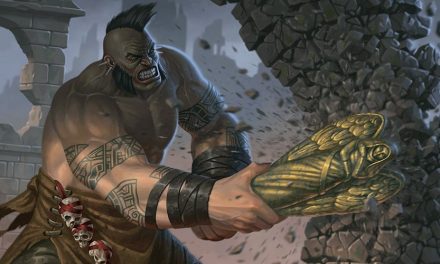When you’re playing a Bard in D&D 5e, nothing is more important to playing your character than the Bardic Inspiration feature.
Bardic Inspiration is used to buff your allies but can have extra uses depending on which of the Bard subclasses you choose.
This guide will help you understand how to get the most out of your Bardic Inspiration while answering some of the questions that players often have about this ability.
What is Bardic Inspiration in D&D 5e?
The Bardic Inspiration feature is a core ability that is available to all Bards. With it, a Bard can give a Bardic Inspiration die to an ally as a temporary buff.
As your Bard levels up, your Bardic Inspiration die increases to reflect this!
The standard usage of Bardic Inspiration allows you to use your words or music to inspire your allies to greatness. Keep in mind that Bardic Inspiration is different than the Inspiration mechanic which we covered in another article!
You might have a quick limerick, an upbeat melody, or some words of affirmation to inspire your allies with this ability. However you choose to roleplay it, they’ll appreciate it!
Using Bardic Inspiration in D&D 5e
As a Bard, you can use your Bardic Inspiration feature to target another creature within 60 feet of you (and that can hear you) as a bonus action.
This gives the creature one of your Bardic Inspiration die. The specific die that they receive is based on your Bard level. You can see which die you are giving your allies at each level on the table below.
| Bard Level | Bardic Inspiration Die |
| 1 – 4 | d6 |
| 5 – 9 | d8 |
| 10 – 14 | d10 |
| 15+ | d12 |
The creature has this Bardic Inspiration die for the next 10 minutes. It can be used only once and is lost if it isn’t used in that time period.
What can Bardic Inspiration be added to?
Whoever you gave the Bardic Inspiration die to can decide when they want to use it within the next 10 minutes.
Bardic Inspiration die can be added to one ability check, saving throw, or attack roll.
Generally, the player will roll the d20 for whichever of these rolls they are attempting to make. After they roll (but before the DM tells them whether they succeed or fail), they can choose to add the Bardic Inspiration to the roll.
To do so, they simply declare that they are going to use their Bardic Inspiration die, roll the die, and add the result to their d20 roll.
Also Check Out: The Best Bard Spells By Level in D&D 5e!
Bardic Inspiration Usage Example
Let’s take a look at an example to show how this works at the table.
The party has found themselves in combat with a Medusa and things are getting pretty intense.
One of the party members, Orryn, accidentally looked the Medusa in the eyes and has begun to turn to stone. He just failed his first saving throw and has to make his next one or else the party will be down a Rogue!
It’s now the party’s Bard’s turn. Madame Avelina Desrosiers, a College of Spirits Bard, turns to our dear Orryn and says “This is not where you will fall…” as she holds up a card from her Tarokka deck.
Her phrasing was macabre and concerning, but oddly inspiring…
Because Madame Desrosiers is a level 5 Bard, Orryn gains a d8 Bardic Inspiration die.
On his next turn, Orryn rolls to resist the Medusa’s petrifying gaze as everyone at the table is holding their breath. He rolls a 10 and looks around until his eyes meet the stern stare of anticipation from Madame Desrosiers.
“I’ll add my Bardic Inspiration to this!” he says as he rolls a 5 on the die. “10 plus 5 plus my Constitution save… I got a 17!”
Everyone cheers as the DM describes Orryn breaking free of the Medusa’s gaze.
“It was a DC 14, by the way.” the DM says after the fight, “That was almost very bad!”
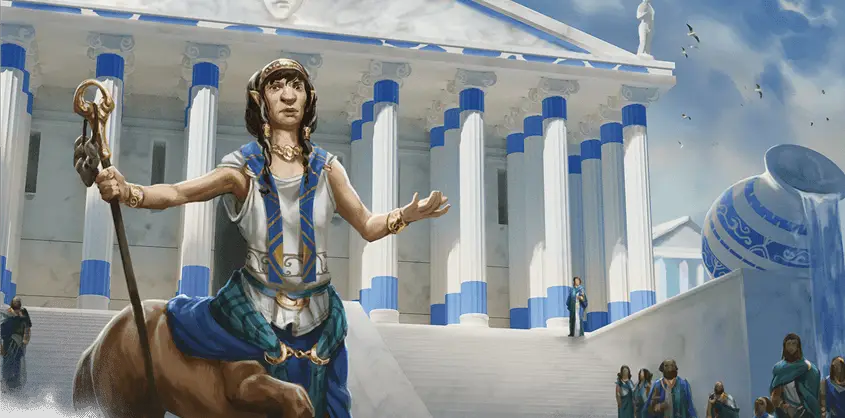
Bardic Inspiration Availability
Keep in mind that you don’t have an unlimited amount of Bardic Inspiration dice to give out. Even the most talented and inspiring of performers needs to recharge from time to time!
Your total number of Bardic Inspiration dice is equal to your Charisma modifier. Because of this, you’ll want to focus on getting our Charisma score to 20 pretty quickly so that you can have 5 Bardic Inspiration dice to give out.
Initially, you regain all uses of Bardic Inspiration when you take a long rest. However, when you reach level 5 as a Bard, you’ll be able to regain these uses on either a short or long rest with your class’s Font of Inspiration feature.
When you reach level 20, you’ll always have at least one use of Bardic Inspiration ready in any combat with the Bard’s Superior Inspiration feature.
Magical Inspiration
Tasha’s Cauldron of Everything introduced a new optional class feature for Bards: Magical Inspiration.
With this feature, a creature that casts a spell while they have Bardic Inspiration can buff the spell’s effect.
For a healing spell, they would roll the Bardic Inspiration die and add the result to the number of hit points being restored. For a damage spell, they would do the same and add the result to the total damage.
This is especially potent with spells that affect multiple creatures like Mass Cure Wounds or Fireball. The number rolled is now effectively multiplied by however many creatures are being affected by the spell.
Considering that this feature is available to Bards at level 2, it can be extremely powerful!

Common Questions About Bardic Inspiration in D&D 5e
Before we get into the special uses of Bardic Inspiration depending on your subclass, I want to answer some common questions about this ability.
Can You Use Bardic Inspiration on Yourself?
You cannot use Bardic Inspiration on yourself. According to the Player’s Handbook, the creature receiving this bonus must be within 60 feet of you, able to hear you, and must be someone other than yourself.
However, if you are playing a College of Lore Bard, you do get access to the Peerless Skill feature at level 14. This allows you to use one of your own Bardic Inspiration dice when you’re making an ability check.
Can You Give Bardic Inspiration to Multiple People?
You can give multiple people your Bardic Inspiration, but any creature may only have one Bardic Inspiration die at one time.
When playing a Bard, I’ve often found it useful to remind my allies that I’ve given them a Bardic Inspiration.
This is especially useful for making sure that your party’s front-liners are using your Bardic Inspiration so that you can keep them buffed throughout the fight. After all, these extra dice aren’t helping anyone if they’re never getting used!
Just keep in mind that it takes a bonus action to give an ally Bardic Inspiration. If you’re attempting to inspire 3 people, it will take 3 turns to do so.
Does Bardic Inspiration Break Invisibility?
If you’re looking to inspire your allies while under the effects of the Invisibility spell, you’re totally safe to do so as long as they can hear you.
The Invisibility spell breaks when you attack or cast a spell. Because Bardic Inspiration is neither of those things, you are able to use it without becoming visible again!
This was confirmed by rules designer, Jeremy Crawford.
Does Someone Have to be Conscious to Receive or Use Bardic Inspiration?
An unconscious creature is unaware of its surroundings and therefore doesn’t meet the criteria of being able to hear your attempts to inspire them.
You can read more about the Unconscious condition in my guide to the conditions of 5e.
One could argue the finer points if they just really, really want this to work. Personally, I think it’s a bit of a stretch and would rule “no,” but it’s ultimately up to your DM.
Though, if you’re asking if you can use Bardic Inspiration on someone who is unconscious, I’m willing to bet that you’re also wondering about this next common question…
Can Bardic Inspiration Be Used on Death Saving Throws?
Death saving throws are a special type of saving throw with noticeably higher stakes, but they’re still a saving throw.
While you may not be able to give your unconscious ally Bardic Inspiration while they’re lying on the ground, that doesn’t mean they’re totally helpless.
If the character already had one of your Bardic Inspiration dice when they dropped to zero hit points, they can (and absolutely should!) use it now!
Related: Dropping to Zero Hit Points in D&D 5e
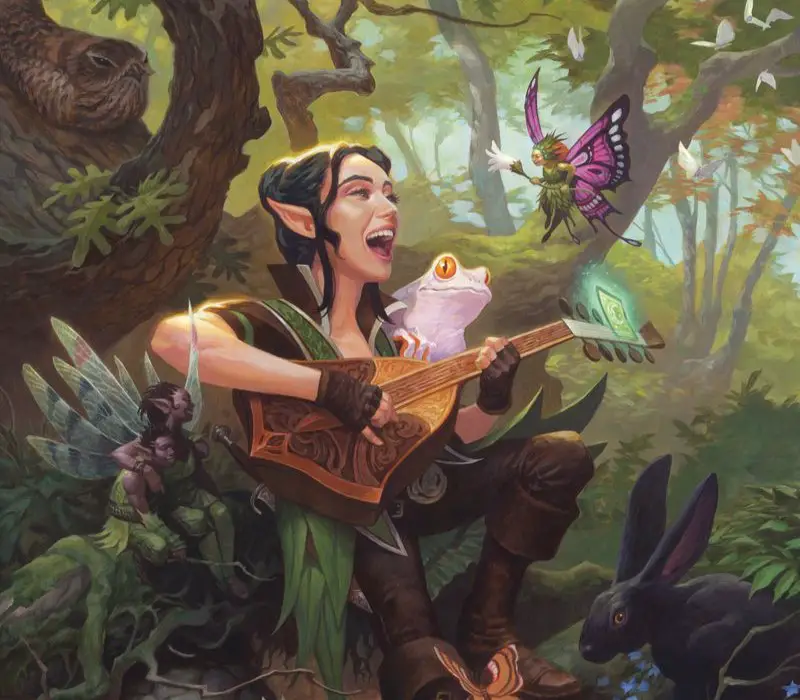
Bardic Inspiration Uses by Subclass
Alright, so now that we’ve covered the standard usage of Bardic Inspiration in D&D 5e, let’s take a look at how the various Bard subclasses take their own unique approaches to using this important feature.
Keep in mind that all of these subclasses are still able to use Bardic Inspiration as we’ve discussed above. The subclass simply adds more options with abilities that are fueled by using your Bardic Inspiration dice.
You’ll want to keep a certain balance between buffing/inspiring your allies and using your dice for your own special subclass abilities!
College of Lore
At level 3, Bards of the College of Lore can expend a use of their Bardic Inspiration die to use their Cutting Words ability. This is used to lower the target’s attack roll, damage roll, or ability check.
As I mentioned earlier, you’ll also get the Peerless Skill feature at level 14 which lets you add a Bardic Inspiration roll to your own ability checks.
You can read more about that in my College of Lore Bard Guide!
College of Valor
At level 3, Bards of the College of Valor provide extra buffs with their Bardic Inspiration thanks to the Combat Inspiration feature. Your ally can now use the inspiration they receive from you to deal additional damage or to boost their Armor Class as a reaction.
Ready to become your party’s fearless skald? Check out the College of Valor Bard Guide!
College of Glamour
Not only does the level 3 College of Glamour Bard get to take on a wonderful new appearance when using their Mantle of Inspiration feature, but they hand temporary hit points out to a number of their allies as well!
Even better, allies who receive these temporary hit points can immediately use their reaction to move up to their speed without provoking attacks of opportunity. This is great for when you need to reposition your party mid-fight!
Check out the College of Glamour Bard Guide for more!
College of Swords
At level 3, the College of Swords Bard can follow up their attacks with a Blade Flourish. These are special moves that are used by expending a use of your Bardic Inspiration.
When you hit level 14, you can choose to use a d6 for these Blade Flourish moves instead of using your Bardic Inspiration dice.
Read all about it in the College of Swords Bard Guide!
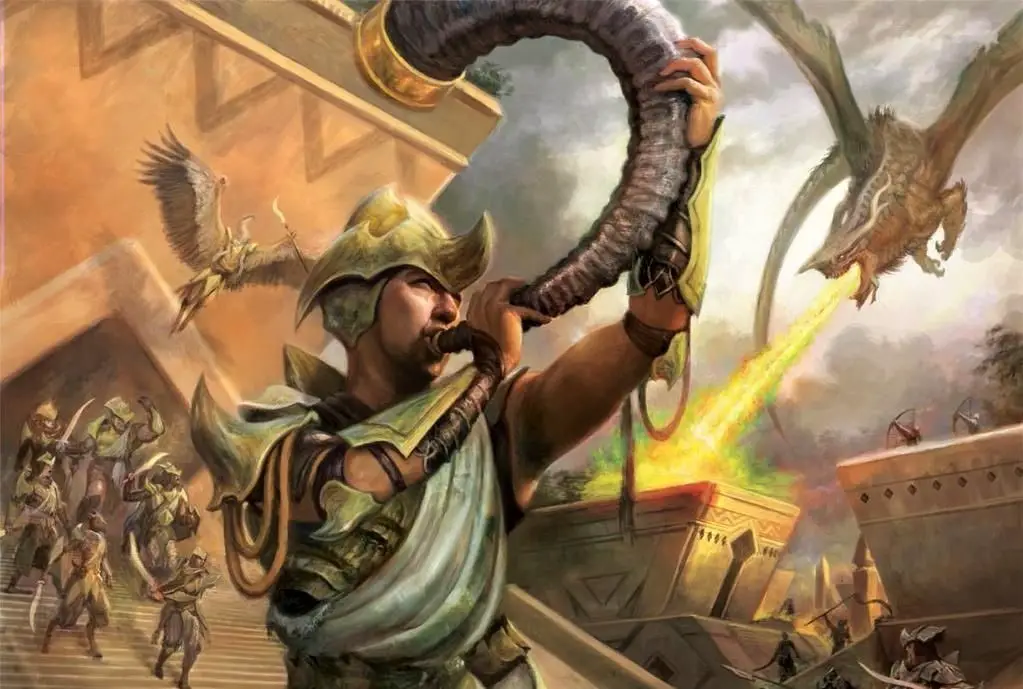
College of Whispers
The College of Whispers Bard can use their Bardic Inspiration dice to make their attacks do extra psychic damage. You get this Psychic Blades feature at level 3 and the damage it deals increases as you level up.
This one’s easy to get carried away with, so make sure you remember to keep an eye on how much you’re using it!
More on that in the College of Whispers Bard guide!
College of Creation
When you use your Bardic Inspiration as a College of Creation Bard, your ally gets extra bonuses.
Your level 3 ability, Mote of Potential, causes the inspiration to manifest in a physical form (a musical note, a flower, or some other such thing).
When the ally uses the inspiration you’ve granted them, the extra bonus that the Mote of Potential provides depends on what it is being used for.
Read more about that in the College of Creation Bard Guide!
College of Eloquence
At level 3, the Unsettling Words feature lets the College of Eloquence Bard subtract from the target’s next saving throw.
Your level 6 ability, Unfailing Inspiration, helps you get more mileage out of your Bardic Inspiration. If a creature uses your Bardic Inspiration but still fails their roll, they get to keep the Inspiration!
Lastly, at level 14 you gain the Infectious Inspiration feature.
When a creature uses the Bardic Inspiration that you provide them with, you can use your reaction to give another Bardic Inspiration die to a different ally. This doesn’t expend your uses of Bardic Inspiration beyond the first use and can be used a number of times per day equal to your Charisma modifier.
Be the charismatic speaker your party needs with the College of Eloquence Bard Guide!
College of Spirits
Van Richten’s Guide to Ravenloft brought us the College of Spirits Bard. As a powerful medium, your level 3 ability (Tales From Beyond) allows you to use your Bardic Inspiration to channel a Spirit Tale from beyond the grave.
What Spirit Tale you get is random, though. You’ll get more control over it at level 14, but what you’ll specifically get is still somewhat of a surprise.
For the full list of possible Spirit Tales, check out the College of Spirits Bard Guide!
Conclusion – Bardic Inspiration in D&D 5e
Whether you’re playing as a Bard or playing with one, it’s a good idea to know how the Bardic Inspiration feature works.
As a Bard, this is the most important tool in your kit. It helps you buff your allies when it matters most while also powering some of your most useful subclass abilities!
Hopefully you’ve found this guide helpful!
If so, maybe you’ve been inspired to join my newsletter by signing up below! It’s the best way to make sure you never miss a thing!
You can also follow me on Facebook and Twitter.
If you found this article helpful and want to support the site, you can buy me a coffee here! (It’s not expected, but very appreciated!)
Still have questions about Bardic Inspiration in D&D 5e? Hit me up in the comments and I’ll be happy to help you out!
Don’t forget to check out the full Guide to the Bard Class! It’s the ultimate resource for any Bard!
Not sure what kind of Bard you want to play? Here’s my full Bard subclass ranking!



